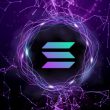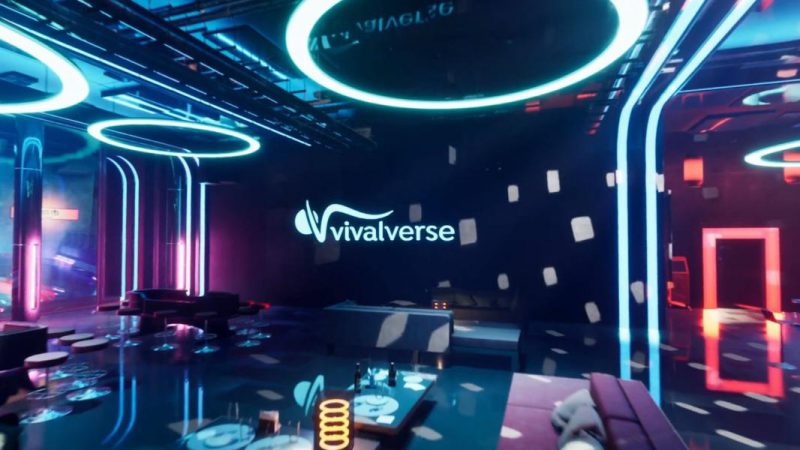VivalVerse is a virtual reality (VR) platform built on the Binance Smart Chain (BSC). The platform, built with the BEP-20 protocol, uses Vival tokens and Vival NFTs (non-fungible tokens). The project includes features such as a Metaverse, NFT Marketplace, Dex Swap, Stake to Earn, and Play to Earn games. It allows users to socialize and make money at the same time. VivalVerse uses economic models like production-buy-sell-rent. The project aims to have high user participation while generating income for its user base.
VivalVerse metaverse
VivalVerse offers a blockchain-based gaming solution that aims to monetize user activity. The team has created a user-friendly platform where people can quickly sign up and interact.
The NFT market and decentralized financial infrastructure allow the purchase, sale, and rental of virtual land and virtual goods. Users can also design virtual objects or interaction spaces without any programming knowledge. Users can earn money by selling these items through the NFT Market platform or renting them out for a predetermined period of time.
Furthermore, the project’s virtual environment contains 10,000 Vival Item NFTs and 100,000 Vival LAND NFTs across four Genesis (metaverse input zones). It aims to create real-life living and interacting spaces. Moreover, the Vival LAND NFTs aim to serve as the fundamental framework of the VivalVerse ecosystem.
The primary goal of the Metaverse is to enable users to participate directly in the economy and earn money through the creation, acquisition, sale, and rental of goods.
NFT marketplace
The properties, avatars, and hundreds of different kinds of objects in the VivalVerse ecosystem are available as NFTs. As a key element of the Metaverse plan, the team has designated a specific location in the NFT market for Vival LAND. The lands will initially be available via the system itself, but users can sell it later on the NFT marketplace.
Vival ITEM NFTs, on the other hand, are user elements. The individual who makes or purchases it, will be its owner in the VivalVerse ecosystem. ITEMS are an essential part of the ecosystem that provides customers with income through functions like renting or selling.
Additionally, users can also use the aid of an inbuilt AI (artificial intelligence) system. In order to increase user involvement with the VivalVerse projection, the team now gives users the ability to work as developers simultaneously. With the help of the user-friendly Vival AI platform, the project offers the chance to create, use, or sell virtual goods without requiring coding knowledge.
Vivalverse ecosystem and tokenomics
The team behind VivalVerse has incorporated a sustainable income model into the project. The majority of ecosystem revenues are meant to be distributed. Using this distribution approach, it was possible to prevent activity pools from being empty and create a projection that is sustainable.
There are two distinct revenue streams in the VivalVerse ecosystem. The first and only income model is the original supply of Vival LANDs and Vival ITEMs and the amount of VIVAL Tokens currently in circulation. The second and ongoing revenue model is 10% of operating revenue from NTFs used in the Metaverse ecosystem.
The 10% running commission, which is the same for all NFTs in the ecosystem, consists of 10% of the costs involved in buying, selling, or leasing each Vival LAND and Vival ITEM.
25% of income is for operational purposes. Meanwhile, the remaining 75% is for redistribution among pools. Of the 75% meant for redistribution, 40% goes to the Stake-to-Earn Pool, 25% to the Play-to-Earn Pool, and 10% to the airdrop and marketing Pool.
As for tokenomics, there are a total of 2,000,000,000 VIVAL tokens. 40% of VIVAL tokens (800 million tokens) are available at the ICO (initial coin offering). 10% (200 million tokens) goes to the Liquidity Pool (DEX Swap Liquidity). 20% (400 million tokens) goes to the Stake to Earn Pool. 10% (200 million tokens) is for the Project Team. Meanwhile, 10% (200 million tokens) each goes to the Play to Earn Pool and the Airdrop and Marketing Pool.
More details
The VivalVerse team plans to have the beta version of Metaverse VR ready for testing by Q4 of 2023. They also plan to take the NFT market live by Q4 and deploy 100,000 Vival LAND NFTs. The NFT Marketplace Audit certification should also be complete by Q4 of this year. By the end of the year, the team will also begin the VIVAL AI design and coding work, and the VIVAL Token ICO and listing will also be held.
The Metaverse on PC and VR should be live by Q1 of 2024. The team also plans to begin the Vival LAND NFT supply by the first quarter of 2024. At the same time, the Vival Token Stake2Earn pool will be opened, and the token will be listed on CoinmarketCap and CoinGecko.
To know more about the project, visit their website, read their whitepaper, Twitter, Telegram, Medium
DISCLAIMER: THIS IS A SPONSORED POST





